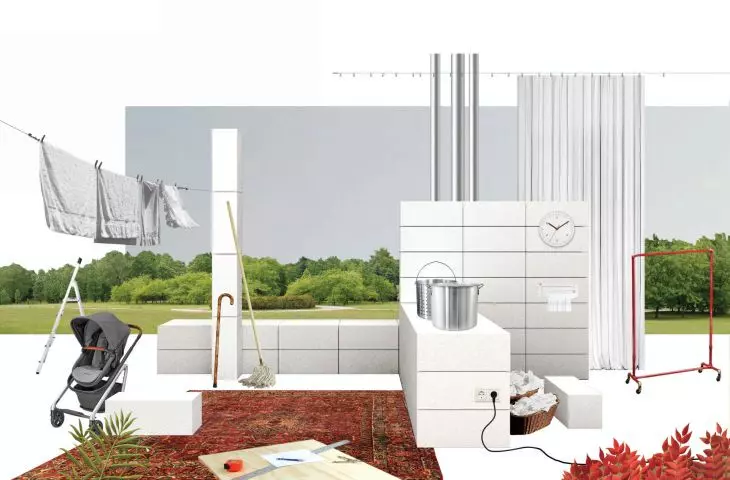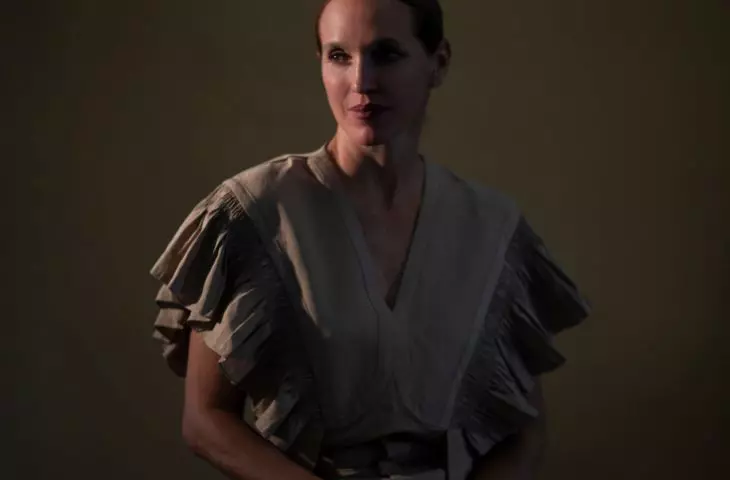The 10th edition of the DoFA Lower Silesian Architecture Festival is coming! From November 18 to 20, discussions centered around the theme of a city of solidarity will take place at the Museum of Architecture in Wroclaw (and in the virtual space from November 10). We talk about whose needs are still being overlooked in the city, the politics of care, ecology and the festival program with Barbara Nawrocka and Dominika Wilczynska, architects from Miastopracownia and curators of this year's DoFa.
Ola Kloc: The slogan of this year's DoFA festival is "City in solidarity", meaning what kind of city?
Barbara Nawrocka: This is the 10th edition of DoFa, and almost every time the event's slogan has included the word "city" accompanied by some adjective. We wanted to be consistent in this. What was close to us, and at the same time most relevant, was solidarity. We now associate it primarily with the war, the refugee crisis, the grassroots uprising of Polish society in response to the arrival of huge numbers of refugee women and men. But we also think of solidarity more broadly - in terms of caring, mutual support, the issue of unpaid care work and sensitivity in design.
For us, solidarity is a positive spurt, an energy that gives hope, but we also realize that this energy has an expiration date. For us, the most interesting question is what we can transpose from this temporary energy, from these spontaneous actions, into our daily design practice.
Dominika Wilczynska: By attaching the slogan "solidarity" to the word "city," we pose a general question about how contemporary cities are constructed, for whose needs. Cities were never created to be solidarity-based, but to make money. So we wonder how existing resources can be used to produce spaces that are friendly to both people and nature.
It is cities, even with their non-idealities, that produce spaces where people can meet (experience the physical presence of other people) and interact, produce new ideas. We focus around this potential and try to observe what is happening emergently as part of the response to the crisis.
event poster
© organizers archive
Ola: Whose needs do you think are being overlooked in the city today?
Dominika: The marginalized groups in the city are still very many. Take, for example, half of the population, namely women. Statistically, they are the ones who most often take care work, it's as high as 75 percent, and cities are not adapted to the needs arising from it. Add to that the elderly, children, queer people, all those and those who don't fit the standards of the classical modulor or Vitruvian man. Cities are not made for nature either. It would be good to challenge the dichotomy of man vs. nature or city vs. natural terrain. I imagine that human-non-human alliances are necessary not only to survive crises, but also out of a simple need for a better city life.
Barbara: We will be addressing these issues at DoF panel discussions. The first one will be available online starting November 10 and is about weaving in the landscape and solidarity with non-human users of the city[link]. The next one, already live in Wroclaw, November 19, is about policies and strategies of care[link]. Dominika mentioned women and care work, and I'll add that it was primarily women with dependents, i.e. children or the elderly, who came to Poland from Ukraine. Do cities have any data on the scale of the need to put in place an infrastructure of care that would allow refugee women to become active in the workforce? We have good examples of innovative policies coming from Bogotá, among others. The Colombian capital's mayor Claudia López Hernández was at WUF11 in Katowice six months ago. I'm curious to know to what extent this is being addressed at all in the offices in Krakow, Warsaw or Wroclaw.
Ola: In addition to proper care policies, what other tools are there that can help create a solidarity city?
Dominika: When inviting guests and visitors to DoFa, we tried to make it a diverse group of people representing different areas and competencies - from city activists to architects to naturalists or people working at the City Hall in Wroclaw. We assume that architects and female architects alone are not able to change the functioning of the city, we need interest-based and interdisciplinary alliances.
Barbara: I would also add the issue of recycling. Ecology in architecture should not be limited to certificates and green roofs. We feel that we should take more ambitious measures. The third panel is chaired by Kacper Kepinski, and he promised to start by saying that the fact that we shouldn't build at all is already known. The question is what to do next. After all, contrary to appearances, work in architecture does not end with new developments, and recycling can involve both recycled building materials and entire buildings, i.e. their next incarnations. Kacper's questions will be answered, among others, by Michal Sikorski from the Tło studio and Zofia Jaworowska from the Brda Foundation, who will also lead one of the workshop groups. Michal works on recycling in architecture, and you may know Brda from its campaign to collect windows for Ukraine. Anastasiya Ponomaryova with the Views studio, or Milena Trzcinska and Lukasz Stępnik, will also talk about the new life of buildings at the exhibition. I also recommend paying attention to the adaptation of floating functions proposed by Dominika Janicka and Magda Szpecht.
Ola: A lot of threads are gathering in this slogan "solidarity". I'm guessing that during your preparations for the festival you discovered some more new themes, examples, solutions - what particularly surprised you, or what caught your attention the most?
Dominica: The CO-HATY project, which Anastasiya Ponomaryova is working on, is currently being implemented in western Ukraine and involves the conversion of existing facilities into collective accommodation for internally displaced persons. The response to the current crisis is accompanied by an in-depth analysis. The choice of the facility is not random. The neighborhood, the surrounding greenery, the proximity to the city center, and the susceptibility of the building itself to change its function are important. The building in Ivano-Frankivsk presented at the exhibition was first a kindergarten, then an office building. It has stood empty for several years, and is now being remodeled again, but was designed to serve as cohousing in the future.
CO-HATY in Ivano-Frankivsk, an abandoned building before being converted into a cohousing center
Photo: Nastya Kubert
Barbara: In March, we searched for the most interesting contemporary female architects from Ukraine at the Ball, and since then, by following their social media profiles, we can observe their involvement in various initiatives and aid projects, primarily in the design of temporary housing. I recommend keeping an eye on the VSIMDIM mobile apartment project. A balbek bureau concept called Re:Ukraine System was also present on Polish portals. But both examples are temporary housing projects. What we find most interesting about CO-HATS is that on the one hand they respond to current needs, and on the other hand, they also design for the long term.
During the inventory of various sites in Krakow that are being converted into collective housing for refugees, it turned out that a place with access to electricity is an important point where people gather. It is a public space that cannot be extinguished. It must be made common and accessible to all. It's interesting to see how in crisis situations temporary gathering spaces center around different functions than usual. This observation was shared by Karolina Częczek and Eugenia Bevz, who we also invited to co-create the exhibition. "Unit of Concern" of their project is a multifunctional utilitarian object whose starting point was the pretexts for creating a meeting place in crisis.
collage
© Karolina Częczek, Eugenia Bevz
Ola: The special guest of the festival will be Tatiana Bilbao - why her?
Dominika: Tatiana Bilbao is currently one of the brightest stars of architecture in the world. We type that she will collect all the most important industry awards in the following years. What's interesting to me is that she combines many threads and perspectives on influencing the city and design. Before establishing her own office, she was an advisor to the Ministry of Development and Housing in Mexico or a member of the Directorate General of Development of the Urban Development Advisory Council. Her projects are geared toward combining this knowledge and great social sensitivity. In addition to large volumes, she has a social housing project completed in Mexico. It's a dignified (and very nice) living space that lends itself to extensions and personalization within its framework.
Barbara: She combines practice and theory, among other things, by teaching at Yale. Her students in her residential design classes read Hayden and Federici. These are authors who address the topic of care work, and Dolores Hayden redesigned American suburbs in the 1980s in response to the problem of unequal distribution of reproductive labor. Her lectures call for replacing the logic of carbon (carbon) with the logic of care (care) in city planning. What I remember best from Tatiana Bilbao Estudio's exhibition at Architekturzentrum Wien two years ago is the focus not on the design effect itself, but on the process, the study of context or material. The office's collages don't read like a final representation of the project, more as an introduction to the discussion.
Ola: Thank you for the interview.
event program
festival program
© organizers archive





























